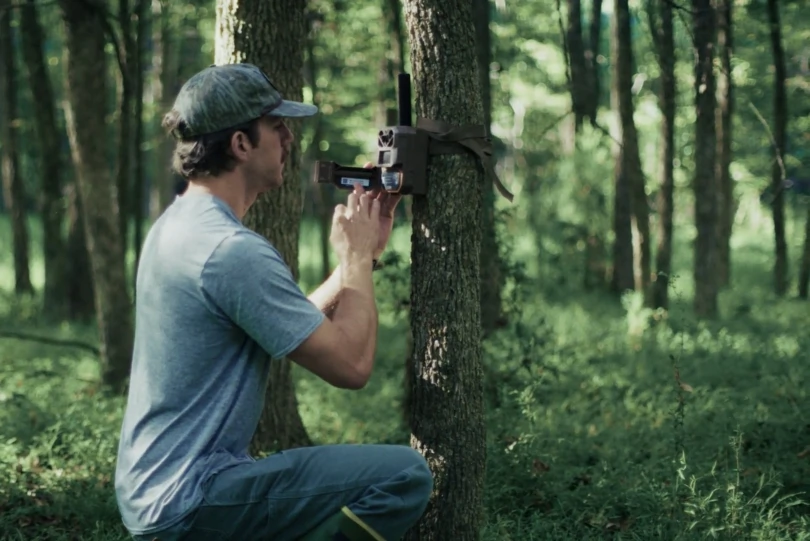With fishing open in most states, there’s no better time to try and catch new fish species on the other end of your line. And these large freshwater fish can fill your freezer with one cast.
There are over 1,000 species of freshwater fish in the inland reaches of North America. And among those are many big ‘uns that are fishable game species for both sport and food.
Some are North American classics like catfish and sturgeon. Others are invasive and have the potential to destroy ecosystems. And others still are prehistoric relics that few people know about.
Here are five of the largest freshwater fish to seek out as spring warms us into more time on the water.
Sheefish: Alaska, Northwestern Canada

The sheefish is the world’s largest type of whitefish, and this wild sucker can be found and fished in Alaska, Canada, and Asia. It can grow up to 59 inches and 60 pounds. It spends its time in North America’s Yukon and Mackenzie river watersheds. The meat of this fish — like its whitefish cousins — is white, flaky, and oily.
Also known as a nelma, the fish is anadromous, meaning it moves upriver from the sea to spawn, and it can survive in the brackish waters between ocean and river. They can live between 20 and 30 years, and a fish in Canada’s NWT was once aged at 39 years.
Nerdy fact: Sheefish will travel up to 930 miles to spawn. They’re known as “broadcast spawners,” which means they can spawn multiple times in their life cycle.
Lake Sturgeon: Mississippi River Basin, Great Lakes, Hudson Bay, Vermont

If you thought the sheefish was big, you’re just in time to meet the lake sturgeon. These behemoths can grow over 7 feet long and weigh up to 240 pounds.
Males live up to 55 years while females can hover between 80 and 150 years! Yep. Somewhere there’s a sturgeon that’s been swimming around since President Andrew Johnson was impeached near the end of the Civil War.
Once almost eradicated from North America, the lake sturgeon is seeing a resurgence across its home waters. Wisconsin, Minnesota, Michigan, and Canada offer the best spots for catching yourself a lake sturgeon. But there are typically restrictions around fishing for sturgeon, and you’ll need to figure out tagging requirements.
Nerdy fact: Females don’t reach sexual maturity until they’re between 14 and 33 years old, and most become reproductive between 22 and 24.
Paddlefish: Mississippi River Basin

These bonkers monsters are a bit of an outlier in the evolutionary timeline. Called “primitive fish,” they’re basically the same fish that existed during the early Cretaceous Period. And that was only 120-125 million years ago.
The American paddlefish has a surprisingly large range across the U.S. and can be found from Montana’s Missouri River all the way over to the river systems of Virginia and down through Alabama, Louisiana, and Texas.
Although the species is regarded as vulnerable in many areas, you can still fish them in 13 states. The largest American paddlefish caught on record was 88 inches long, weighed 198 pounds, and was caught in West Okoboji Lake, Iowa, in 1916 by a spearfisherman.
Nerdy fact: Their closest relative, the Chinese paddlefish, was last seen in 2003. A much bigger paddlefish, the largest fish caught on record measured 23 feet long and was estimated to weigh a few thousand pounds.
Alligator Gar: Mississippi River Basin and Gulf Coast States, Primarily

Another species that found its beginnings in the early Cretaceous Period, the alligator gar is a wacky, torpedo-shaped fish that lives mostly in the Mississippi River basin and the Gulf Coast states. But its range extends all the way up into Ohio and Kentucky. Recent efforts have been made to introduce them to areas where Asian carp are a serious problem, in the hopes these aggressive predators will assist in management.
There are a few state fisheries that allow sportfishing, including Oklahoma, Arkansas, Mississippi, and Louisiana. But the best spot to get after these cool fish is in Texas.
The world-record gar was caught on the Rio Grande on a rod and reel in 1951, and it weighed a whopping 279 pounds. It’s a good-eating fish that’s worth the effort, and they’ve become a prized catch for bow-fishers. They’re the second-largest freshwater fish in North America, only beat out by the monstrosities that are white sturgeon.
Nerdy fact: Native Americans and Carribeaners used the gar’s ganoid scales to make broadheads, breastplates, and shields for plows. Settlers tanned their skins to make durable leather, and today, jewelers use their scales to make jewelry as well.
Flathead Catfish: Texas, Gulf of Mexico, and Mississippi, Ohio, and Missouri River Basins

This wide-ranging catfish is considered to be the best-eating of American catfish species. It’s the second-largest-growing catfish, only outgrown by the blue catfish. But it’s known to grow longer — if not bigger — than blue catfish. It’s widely distributed in the Midwest, East, and South, and some pockets range as far north as the Pacific Northwest and Canada.
A flathead can grow up to 5 feet long and weigh up to 60 pounds. This prolific fish can survive in all sorts of water, from small rivers to the brackish inlets and reservoirs. They prefer live bait and will often hang in submerged wood cover.
Nerdy fact: A great place to catch flathead catfish is in the Chesapeake Bay, where you’ll be doing the waters a favor, as the species is invasive and destructive to the native species like menhaden and blue crabs.







